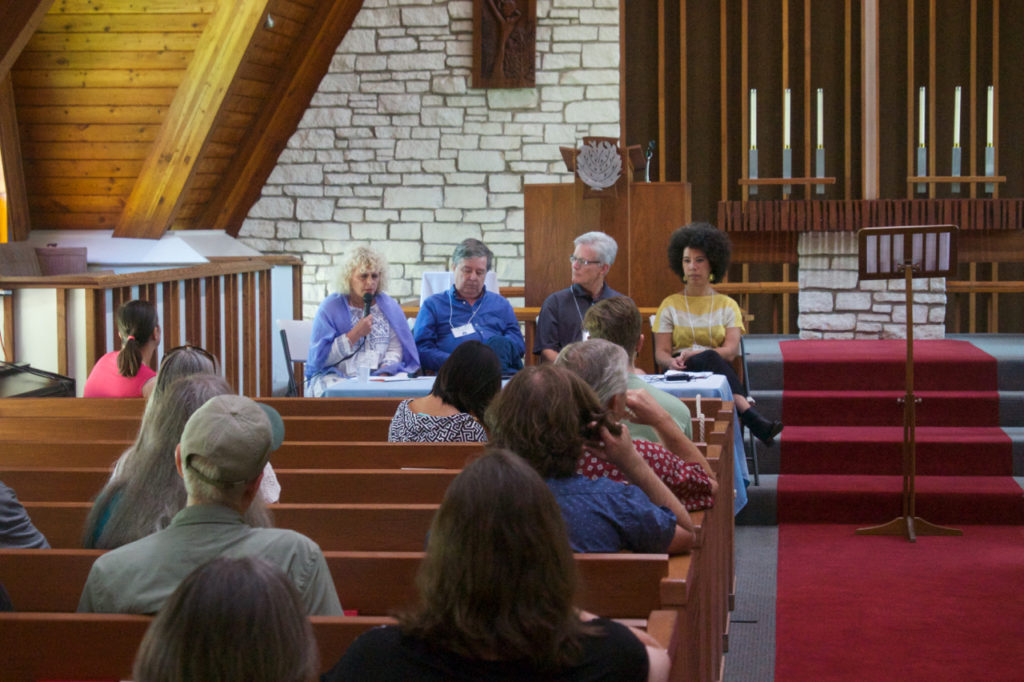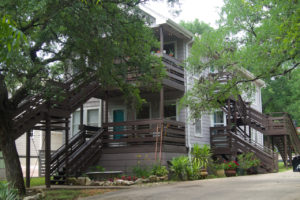 Many communities in the Austin area can boast a rich, unique history, and Clarksville is certainly near the top of that list. Founded by emancipated slaves in 1871, Clarksville’s story is one of racism, segregation and discrimination, but it’s also about housing and economics, and that story is still being written. That’s why on Saturday, May 7th, St. Luke’s United Methodist Church in Clarksville made an appropriate location for a panel discussion about Austin’s need for more affordable housing followed by a tour of missing middle properties in the community. The event was put together by Imagine Austin and AIA Austin DesignVoice.
Many communities in the Austin area can boast a rich, unique history, and Clarksville is certainly near the top of that list. Founded by emancipated slaves in 1871, Clarksville’s story is one of racism, segregation and discrimination, but it’s also about housing and economics, and that story is still being written. That’s why on Saturday, May 7th, St. Luke’s United Methodist Church in Clarksville made an appropriate location for a panel discussion about Austin’s need for more affordable housing followed by a tour of missing middle properties in the community. The event was put together by Imagine Austin and AIA Austin DesignVoice.
The first of four speakers on the panel was Mary Reed, President of the Clarksville Community Development Corporation. Reed told the story of how many of Clarksville’s black residents resisted gentrification for decades, a defiance that resulted in the City refusing to pave streets and install streetlights, sewers or flood control. Eventually affluent homes were built in Clarksville and the resulting property tax hikes forced many out of their homes and their community. Clarksville CDC was established to create affordable housing so Clarksville natives could remain there or move back.

Click the image to view missing middle housing in Clarksville
Today, Clarksville CDC maintains nine affordable properties for 15 low-income families. In the process, they’re helping to preserve the history and a sense of community there and helping it remain a very diverse place to live.
The second panelist was CodeNEXT project manager Jim Robertson. Robertson pointed out that because Clarksville has such a unique history, it also has a uniquely diverse array of housing types, much of which would be considered “missing middle”, or falling between traditional single family homes and large multifamily properties.
Robertson talked about the priorities of CodeNEXT as outlined in the Housing Affordability Code Prescription, including focusing growth around major commercial corridors, and adjusting lot sizes to accommodate a diverse range of housing and promote density. He also said CodeNEXT could result in a simpler permitting process for missing middle housing. He warned, however that missing middle housing alone will not solve Austin’s affordable housing problem.
The third speaker, City of Austin Senior Planner Jessi Koch spoke more about Austin’s housing crisis, a deficit of more than 47,000 affordable units for residents with incomes of $25,000 and below. Koch explained how tools like the Density Bonus Program, the SMART Housing Program the Community Land Trust Program and the Alley Flat Initiative have created hundreds of affordable housing options. Koch said through CodeNEXT Austin could strengthen those programs.
The talk wrapped up with John Henneberger, Co-Director of the Texas Low Income Housing Information Service. Henneberger said as Austin endeavors to create more affordable housing, it should be careful to not create more racial and income segregation in the process. Also, he urged the City to make every effort to include the residents of neighborhoods in any rezoning efforts.
After the panel discussion, participants toured Clarksville to view some of the missing middle housing options in that community. Many of the properties they learned about are shown in a photo gallery.